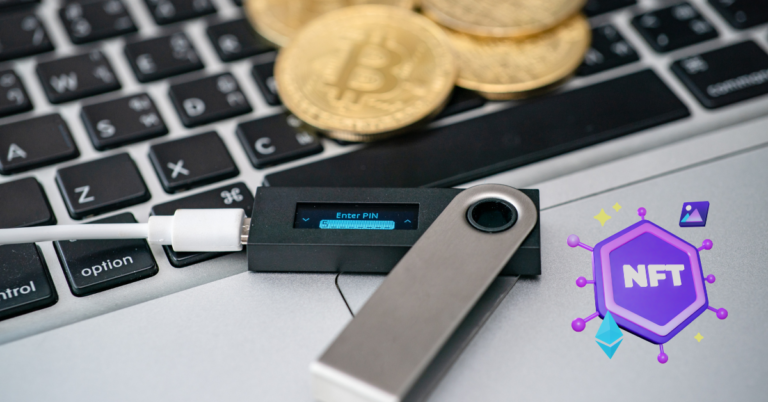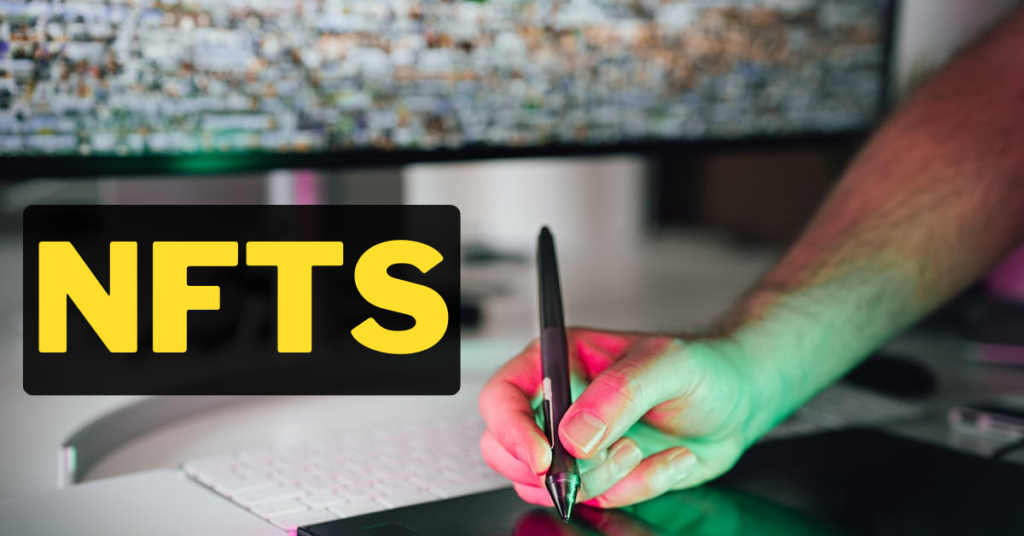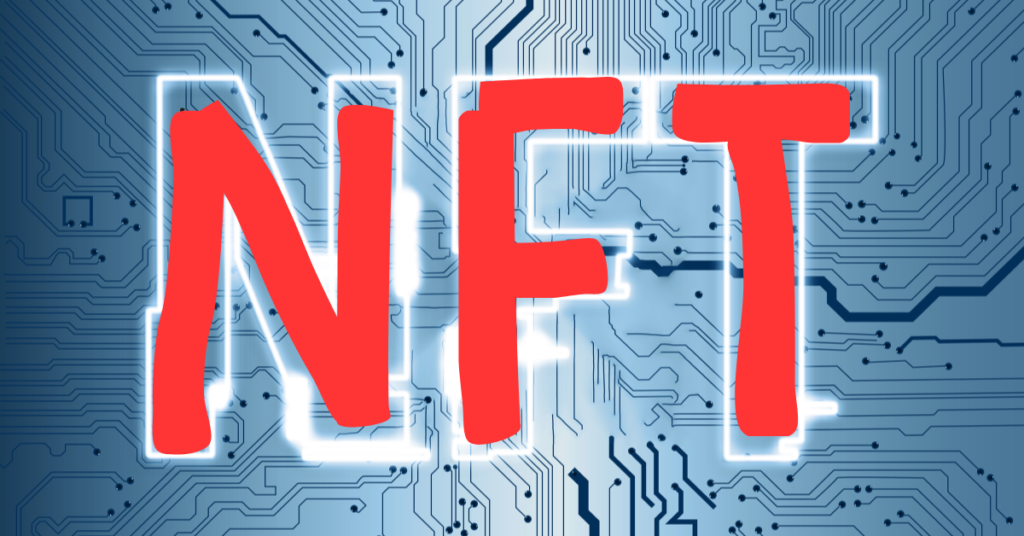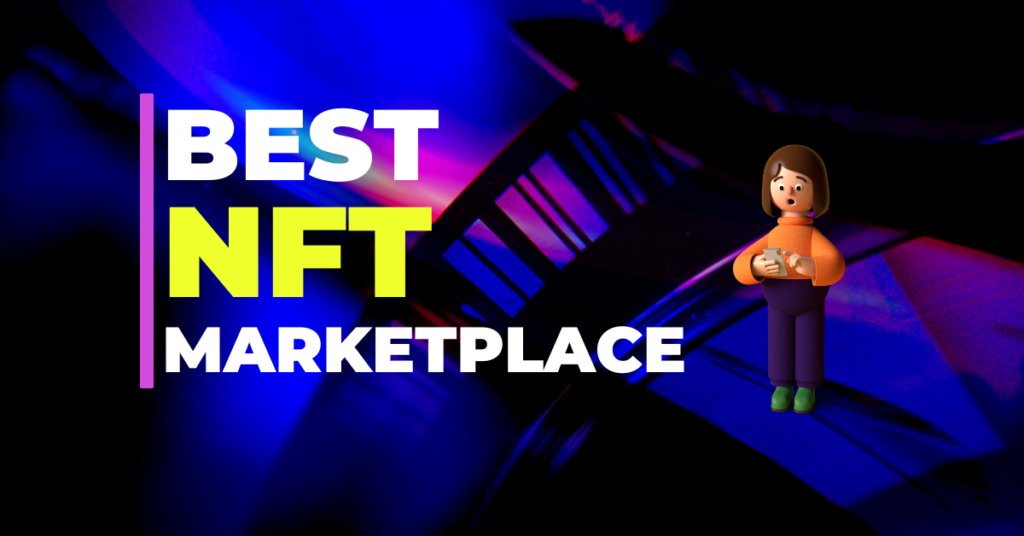As we dive into 2025, the world of non-fungible tokens (NFTs) continues to evolve, offering unique opportunities for collectors and investors alike. NFTs are distinctive digital files on a blockchain network that are completely unique. Unlike trading cards, you cannot swap NFTs for each other on a one-to-one basis.
Whether it’s digital art, music, or even a family rental, NFTs have taken the digital world by storm. However, to safeguard these valuable digital assets, you need an NFT wallet. This guide will walk you through everything you need to know about How to Store NFTs Securely.
Understanding NFTs
What Are NFTs?
Non-Fungible Tokens (NFTs) are unique digital assets that live on a blockchain network. Each NFT is a one-of-a-kind file, meaning no two are the same. This uniqueness is what sets NFTs apart from other digital assets, such as cryptocurrencies, which can be exchanged for one another at equal value.
Whether it’s a piece of digital art, a music track, or even a virtual real estate property, NFTs are revolutionizing the way we think about ownership in the digital world.
How NFTs Differ From Other Digital Assets
Unlike cryptocurrencies like Bitcoin or Ethereum, which are fungible and can be exchanged for one another, NFTs are unique. This means you can’t trade one NFT for another and expect them to have the same value. Each NFT has its own value, depending on factors such as rarity, creator, and demand.
Why Storing NFTs Safely is Crucial

Risks of Improper Storage
With the rise in popularity of NFTs comes the increasing risk of theft and loss. Improper storage of your NFTs can lead to irreparable losses, especially since these digital assets are often tied to significant monetary value. Whether through hacking, phishing, or simply losing access to your wallet, the risks are real.
Importance of NFT Wallets
To keep your NFTs safe, you’ll need a reliable NFT wallet. An NFT wallet not only stores your NFTs but also ensures they are protected from unauthorized access. With the right wallet, you can also easily manage, view, and transfer your NFTs whenever needed.
Types of NFT Wallets
Hot Wallets
Hot wallets are digital wallets which are connected to the internet, making them ideal for frequent transactions. These wallets are popular due to their ease of use and accessibility. However, they are also more susceptible to hacking and other forms of cyberattacks, given their constant online presence.
Cold Wallets
On the other hand, cold wallets are physical devices on which your NFTs are stored offline. These wallets are perfect for long-term storage, especially if you own valuable NFTs that you don’t need to access regularly. The downside is that cold wallets are not free, and losing your device or private key could mean losing access to your NFTs forever.
Hybrid Wallets
Some wallets combine the best of both worlds, offering the security of cold storage with the convenience of a hot wallet. These hybrid wallets are becoming increasingly popular among NFT enthusiasts looking for a balance between security and accessibility.
Top NFT Wallets for 2025

Trezor Model T
The Trezor Model T is a cold wallet known for its top-notch security features. It supports a wide range of cryptocurrencies and NFTs, making it a versatile option for collectors.
Ledger Nano X
Another excellent cold wallet is the Ledger Nano X. It offers Bluetooth connectivity, allowing you to manage your NFTs on the go using a smartphone app.
Metamask
Metamask is one of the most popular hot wallets, especially among Ethereum users. It’s easy to use, widely supported by NFT marketplaces, and perfect for those new to the world of NFTs.
Trust Wallet
Trust Wallet is a versatile hot wallet that supports multiple blockchains. It’s known for its user-friendly interface and strong security features, making it a great choice for beginners.
Coinbase Wallet
Coinbase Wallet is a hot wallet backed by one of the most reputable crypto exchanges. It’s perfect for those who want to store both cryptocurrencies and NFTs in one place.
Setting Up Your NFT Wallet
Step-by-Step Guide to Setting Up a Hot Wallet
- Download the Wallet: Choose a wallet from your device’s app store. Ensure it supports the NFT you intend to buy.
- Create an Account: Follow the on-screen prompts to create an account. This may include setting up a password, recovery phrase, and two-factor authentication (2FA).
- Complete KYC: If required, submit your personal information for Know Your Customer (KYC) verification. This process may involve uploading a government-issued ID and proof of address.
- Add Funds: Transfer cryptocurrency to your wallet to fund your NFT purchases.
- Connect to a Marketplace: Use WalletConnect or a similar feature to link your wallet to an NFT marketplace.
Setting Up a Cold Wallet
- Purchase the Wallet: Buy a cold wallet, ensuring it’s compatible with NFTs.
- Connect to Your Device: Plug the wallet into your computer or connect via Bluetooth.
- Install Software: Download and install the corresponding wallet software.
- Create a Recovery Phrase: Set up your wallet by creating a recovery phrase. This phrase is crucial for recovering your wallet if lost.
- Store Securely: Keep the recovery phrase and device in a secure location.
How to Store NFTs

Buying an NFT
To store an NFT, you first need to buy one. Start by browsing NFT marketplaces like OpenSea or Rarible. Once you find an NFT you like, ensure you have enough cryptocurrency in your wallet to cover the purchase, including gas fees.
Storing an NFT
Once purchased, the NFT will be automatically stored in your connected wallet. Always double-check that the NFT is in your wallet after the transaction is complete. For long-term storage, consider transferring the NFT to a cold wallet.
Using IPFS for NFT Storage
The InterPlanetary File System (IPFS) is another method to store NFTs. IPFS stores metadata, images, and other assets off the blockchain, providing a decentralized way to keep your NFT safe. You can access your NFT anytime with a custom IPFS URL.
Also read: How to Create an NFT
Key Features to Look for in an NFT Wallet
Security
Security should be your top priority when choosing an NFT wallet. Look for wallets that offer two-factor authentication, multi-signature support, and strong encryption.
User Interface
A user-friendly interface makes managing your NFTs easier, especially for beginners. Choose a wallet that is intuitive and easy to navigate.
Connectivity
Ensure your wallet can connect to the NFT marketplaces you use most. This will make buying, selling, and managing your NFTs more straightforward.
Fees
Be aware of any fees associated with the wallet, such as transaction fees or monthly maintenance costs. Free wallets are available but may lack the advanced security features of paid options.
The Cost of NFT Wallets
Free vs. Paid Wallets
While many NFT wallets are free to download, they may come with hidden costs like transaction fees or limited features. Paid wallets, on the other hand, often offer advanced features and better security, making them worth the investment for serious collectors.
What You Get for Your Money
Paid wallets typically offer enhanced security features, better customer support, and additional functionalities like multi-signature support and hardware wallet compatibility.
How to Buy and Store NFTs: A Step-by-Step Guide
Step 1: Browse NFT Marketplaces
Start by exploring NFT marketplaces like OpenSea, Rarible, or Foundation. Look for NFTs that interest you, keeping in mind factors like the artist’s reputation, rarity, and demand.
Step 2: Download an NFT Wallet
Once you’ve found an NFT you’d like to purchase, download a compatible wallet from your device’s app store. Make sure it supports the blockchain on which the NFT is hosted.
Step 3: Connect Wallet to Marketplace
Use the WalletConnect feature or a similar option to link your wallet to the NFT marketplace. This allows you to seamlessly purchase and store NFTs.
Step 4: Perform a Dummy Transaction
Before making a significant purchase, try a small transaction to familiarize yourself with the process. This will help you avoid costly mistakes.
Step 5: Confirm Gas Fees
Gas fees can vary significantly depending on network congestion. Before completing your purchase, double-check the gas fees to ensure you’re not overpaying.
Step 6: Complete the Purchase
Once you’re satisfied with the fees and transaction details, confirm the purchase. Your new NFT should appear in your wallet shortly after.
Best Practices for Storing NFTs
Avoiding Common Mistakes
Common mistakes include not backing up your recovery phrase, using weak passwords, and falling for phishing scams. Always double-check URLs and ensure you’re using the correct wallet and marketplace.
Backing Up Your Wallet
Always back up your wallet, preferably in multiple secure locations. This ensures you can recover your NFTs even if you lose access to your device.
The Future of NFT Storage
Emerging Technologies
As the NFT market continues to grow, so will the technology surrounding it. We can expect to see more advanced storage solutions, including
decentralized cloud storage and AI-driven security features.
Environmental Considerations
The environmental impact of NFTs has been a hot topic. As we move forward, expect to see more eco-friendly solutions, such as proof-of-stake blockchains and carbon offset initiatives.
FAQs
What Are NFTs?
NFTs, or Non-Fungible Tokens, are unique digital assets stored on a blockchain. They can represent anything from digital art to virtual real estate.
How Do Non-Fungible Tokens (NFTs) Work?
NFTs are created using smart contracts on a blockchain, which verifies their uniqueness and ownership.
What Are Some Unique Features of NFT Wallets?
NFT wallets often come with features like multi-signature support, two-factor authentication, and hardware wallet compatibility.
Are NFTs Bad for the Environment?
The environmental impact of NFTs depends on the blockchain they are stored on. Some blockchains, like Ethereum, are energy-intensive, while others, like Tezos, are more eco-friendly.
How Can I Earn With an NFT Wallet?
Some NFT wallets allow you to earn interest on your digital assets or participate in staking, offering additional revenue streams.
Conclusion
Storing NFTs securely is more critical than ever in 2025. With the right wallet, you can protect your digital assets and ensure they remain accessible whenever you need them.
Whether you opt for a hot wallet for daily transactions or a cold wallet for long-term storage, the key is to choose a solution that fits your needs.
As the world of NFTs continues to evolve, staying informed and adapting to new technologies will help you safeguard your investments and make the most of this exciting digital frontier.
So that’s it about this article. If you have any further questions, feel free to comment down below or contact finzerr.
Finzerr is always here to help you!



